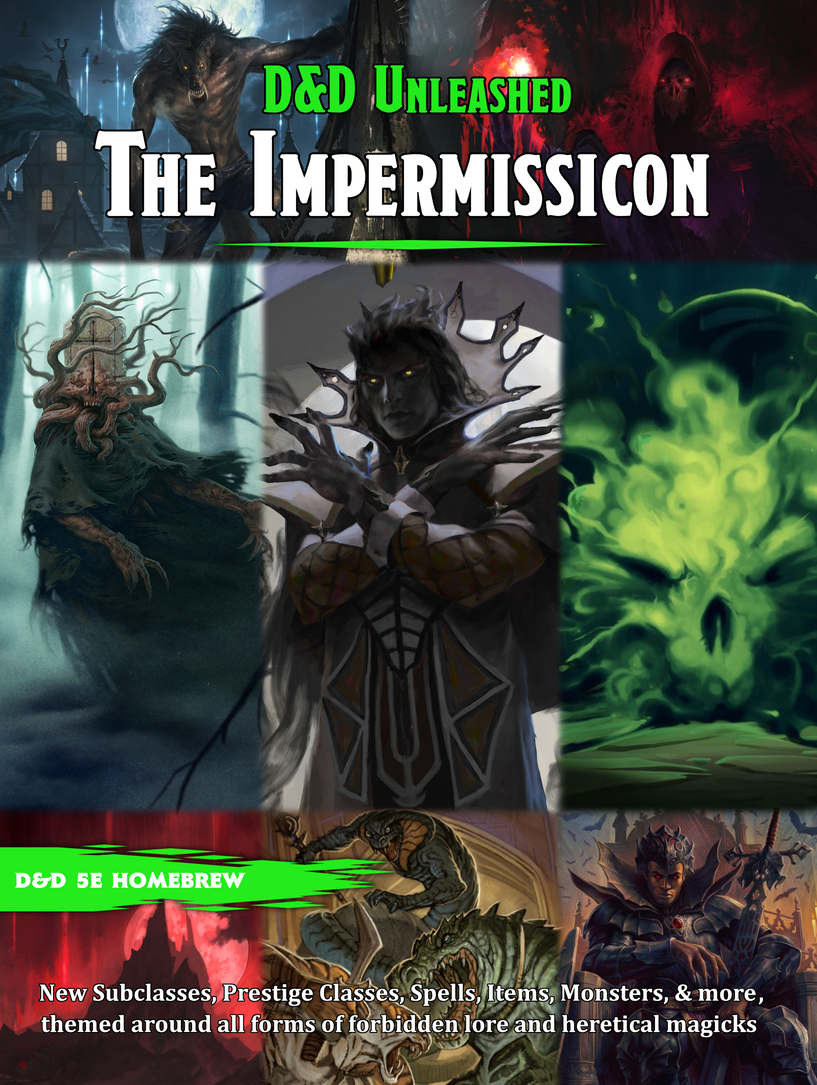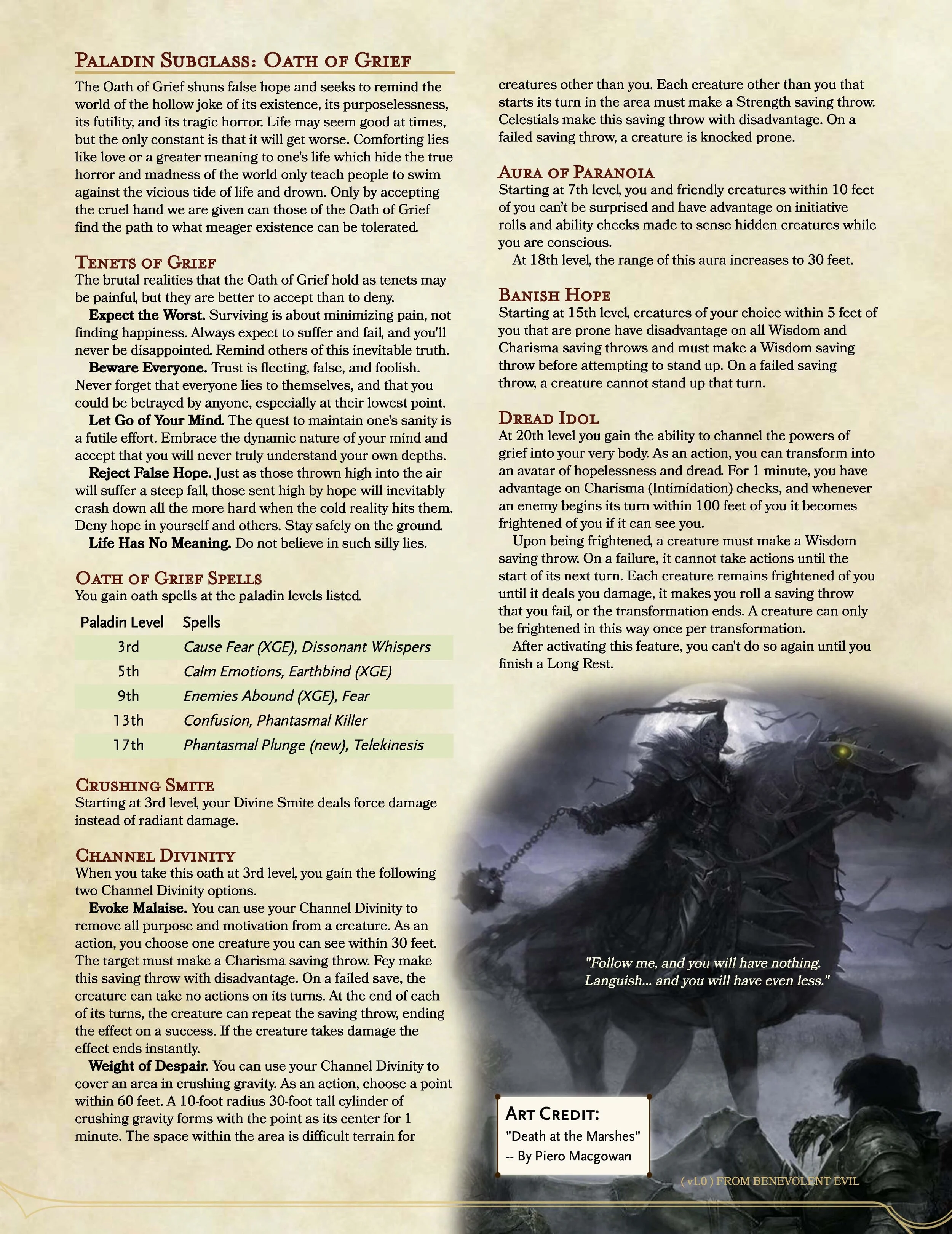Three Subclasses for Lycanthropes (and Vampires)
The most updated version of this content can be found within The Impermissicon, a free 254-page compendium that you can download right here, filled with 24 subclasses, 3 prestige classes, 2 feats, 107 spells, 118 spell variants, 91 monsters, 61 magic items, 24 poisons, 23 diseases, and even more goodies themed around lycanthropes, vampires, and forbidden magic for both players and DMs!
Today we’re sharing one of my favorite content previews from the upcoming compendium The Impermissicon: new subclasses to enable players to build lycanthrope characters for the barbarian, druid, and warlock classes. The warlock subclass can also be used for PCs that are vampires rather than lycanthropes, as well as some other warlock concepts like shapeshifting witches.

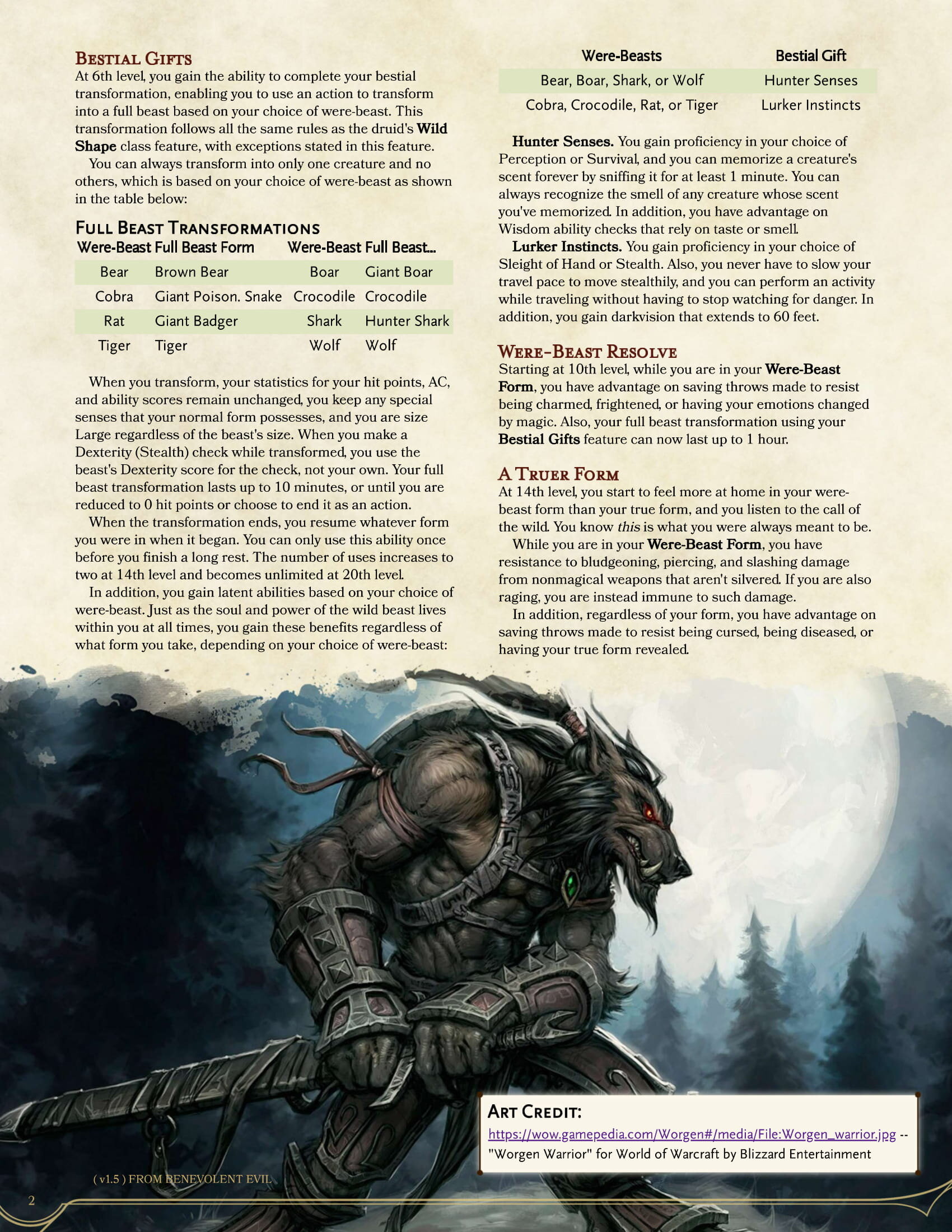
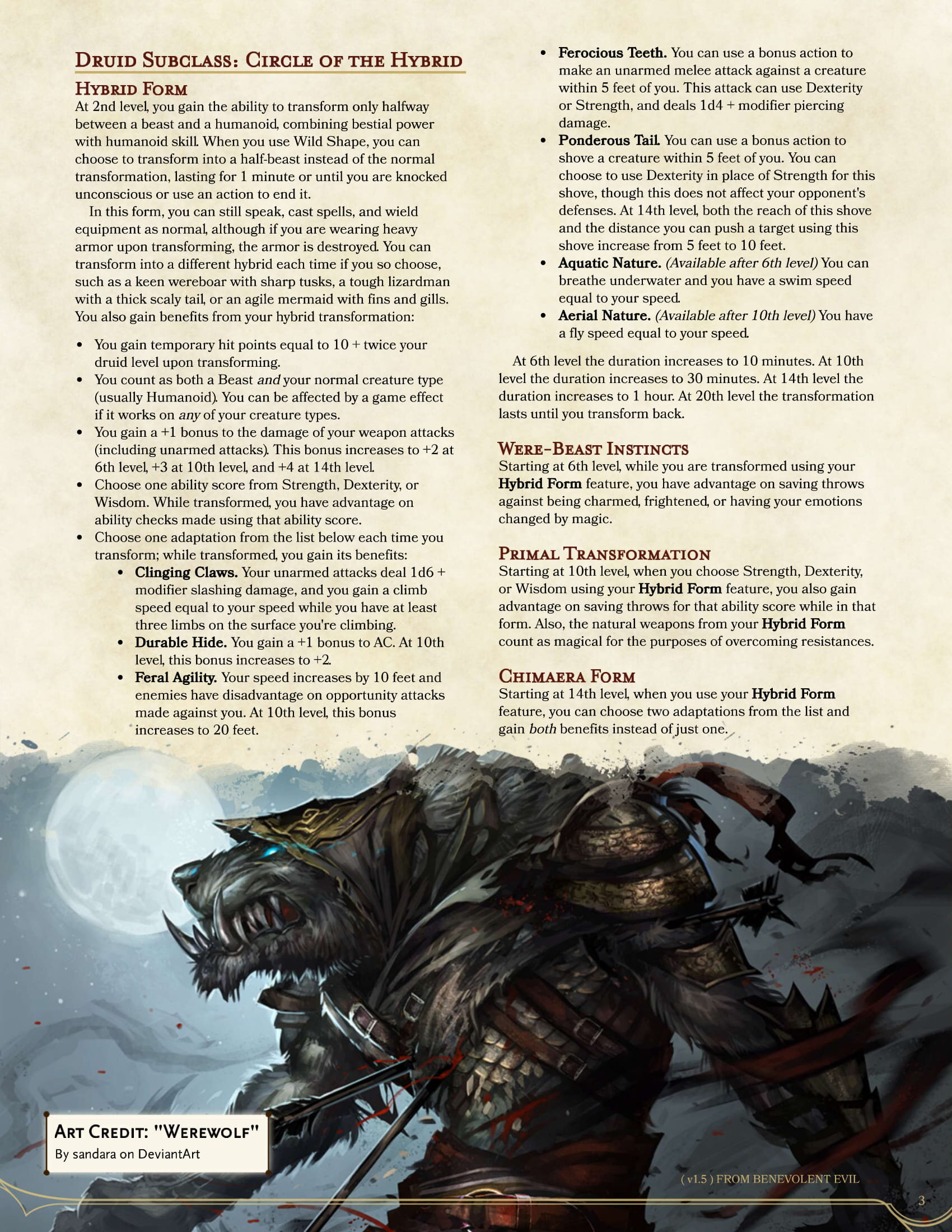
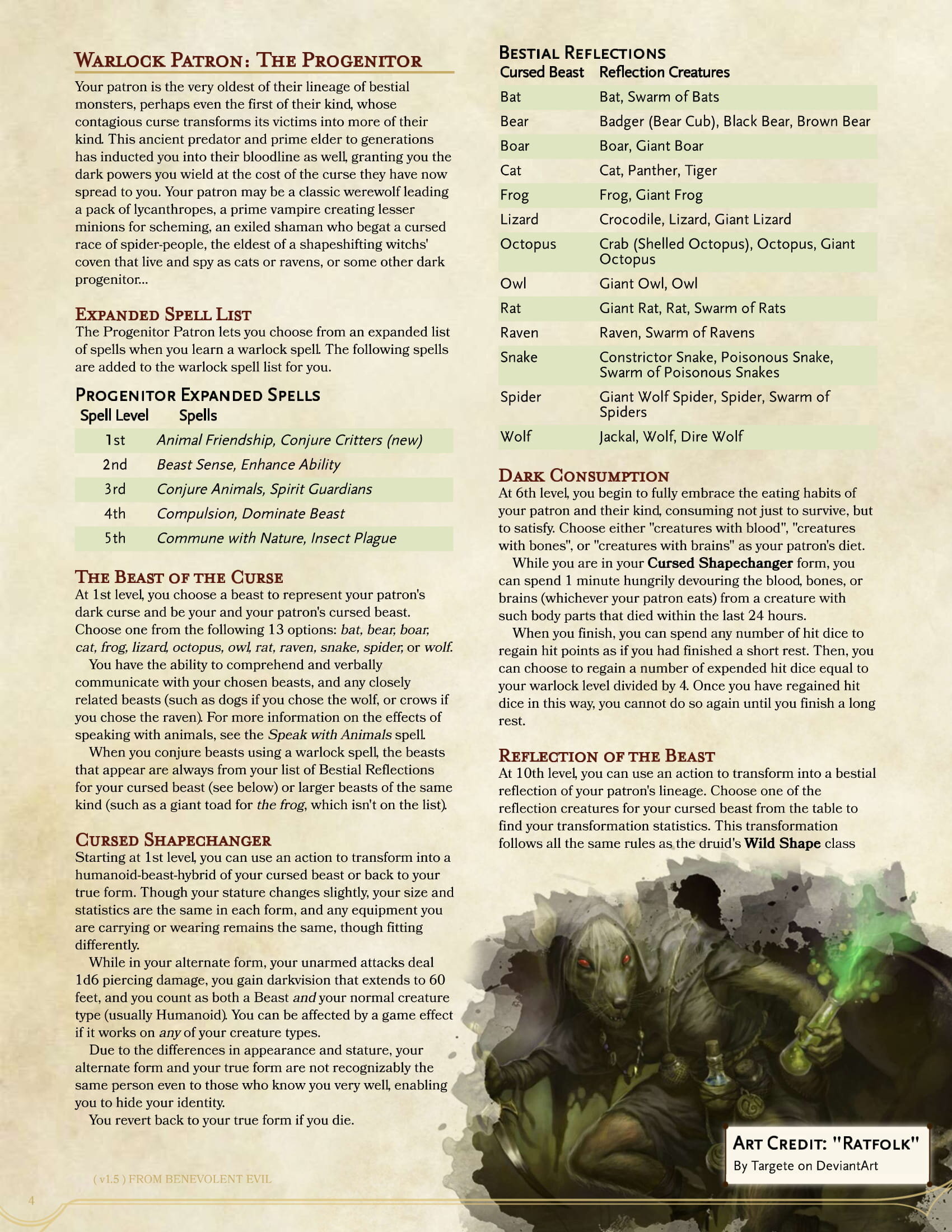
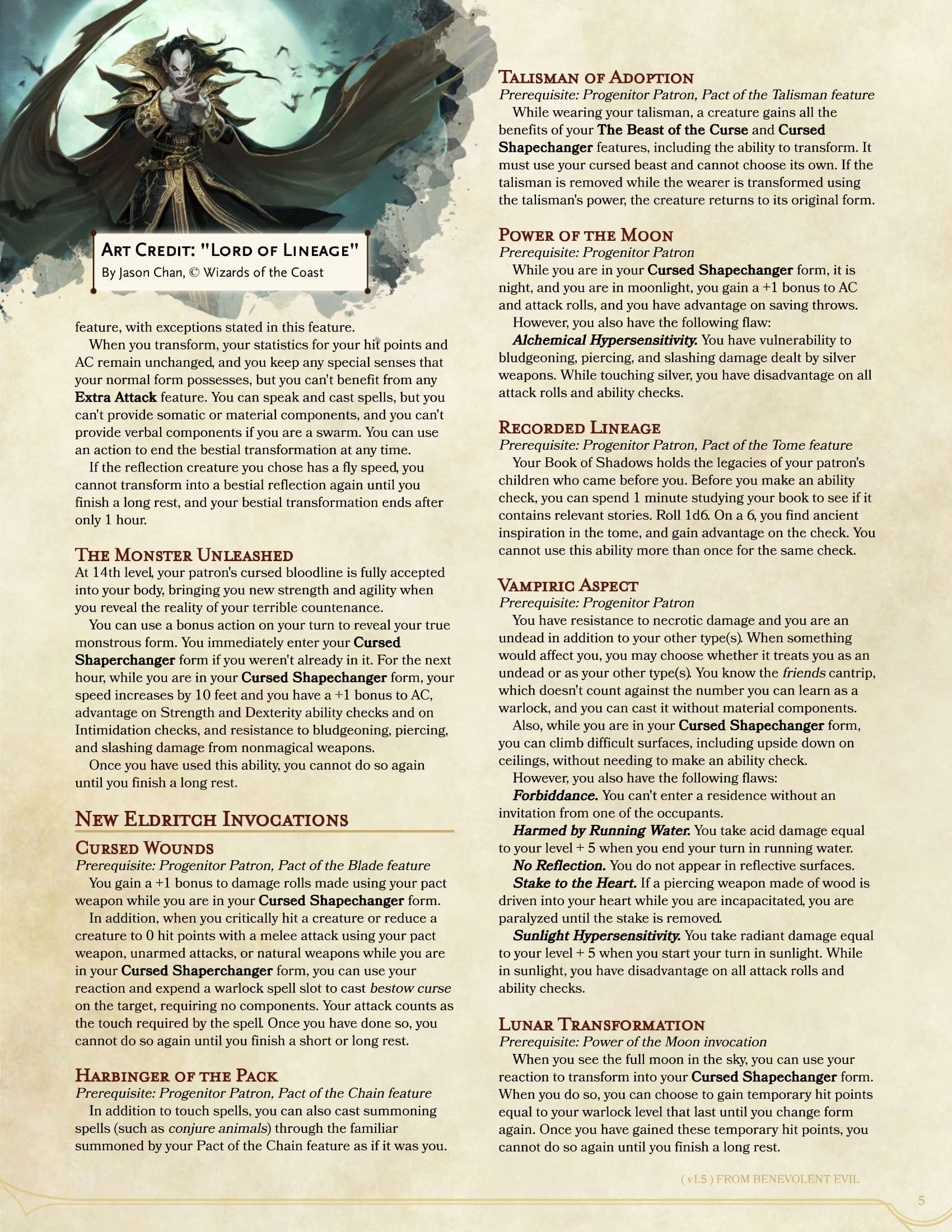
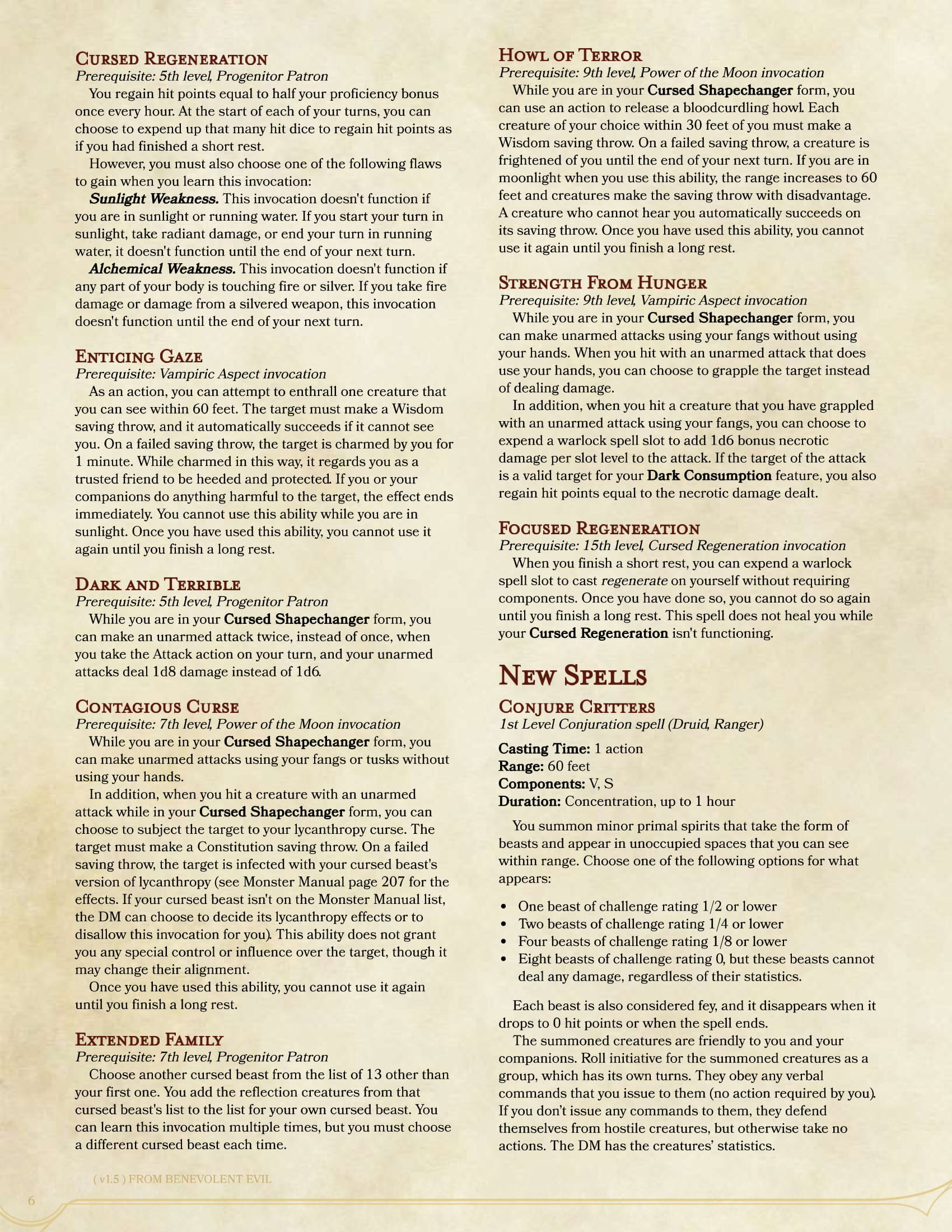
The Path of the Were-Beast lets barbarians choose from one of eight powerful beasts to take as their were-beast form, such as choosing wolf for a werewolf. They can enter their were-beast form only once per day, but they cannot change back until at least an hour passes lasts and the form lasts for a few hours, increasing as they level. The were-beast form provides benefits of its own, but the greatest benefits are only available when the barbarian is both transformed and raging! Higher levels grant the ability to transform into a full beast a limited number of times per day (which also gets benefits from your rage and extra attack), special were-beast senses and defenses, and eventually gaining the same damage immunities as Monster Manual Lycanthropes while transformed and raging.
It’s commonly stated that players who are looking to play a lycanthrope can simply reflavor the barbarian class’s core rage ability as a lycanthropic transformation, but this leads to some key issues. For one, a hypothetical lycanthropic PC who did so would find — until the distant level 15 — that their transformation into a werewolf not only lasts less than a minute, but abruptly ends if the werewolf can’t attack a target for a few seconds. This supposed lycanthrope also has no connection to the moon, vulnerability to silver, bestial traits, ability to transform into beasts, or other critical elements of being a Lycanthrope in most D&D settings (including the default Monster Manual Lycanthropes). With the path of the Were-Beast, a barbarian PC can properly model the abilities of an enraged lycanthope.
The Circle of the Hybrid offers a subclass for druids that lets them embrace the best of both worlds between their caster form and their Wild Shape. This Circle teaches that nature defies categorization and encourages druids to seek out their own new forms, but it also can represent a druid who wields the magic of nature because of their own lycanthropic curse and the power it brings. The first feature grants the Hybrid Form, a different and unique way to use Wild Shape that enables the druid to continue spellcasting while benefiting from their choice of adaptations from nature. The 6th, 10th, and 14th level features all grant new benefits to that Hybrid Form, including the ability to choose multiple adaptations.
This Druid Circle is usable both by players who want to represent a true lycanthrope and by players who simply want to represent a flexible and creative shapeshifter. A player can choose to limit their wild shape decisions and flavor their Hybrid Form transformations as one kind of animal (such as wolves for a werewolf) to really cement that lycanthropy feel, but players who want more diversity and a different feel can vary their transformations as much as Wild Shape does. In many ways, this archetype answers the question “Are there druids who have practiced transforming only partially using wild shape?”
Finally the Progenitor Patron, the oldest in a lineage of cursed shapeshifters, allows warlocks to be built to represent not only werewolves and wererats, but even vampires and other shapeshifters like witches or spider-priestesses. Warlocks choose from one of thirteen spooky beasts to take as their cursed bestial humanoid form, which they can transform at-will to confuse and frighten their enemies. Higher levels grant the ability to drink blood (or bones/brains; you choose which your patron consumes) to instantly spend hit dice, transform into a full beast form that can still speak and cast verbal spells, and a monstrous true form that strengthens and terrifies. This subclass comes with a large list of invocations that enable you to become exactly the kind of werewolf, vampire, or something else that you want to be!
Perhaps my favorite things about the Progenitor are the invocations. Initially, we weren't sure how to make Progenitor vampires feel like they weren't just were-bats without making the lycanthrope Progenitors feel like they were vampiric, until we realized that the solution lay in the optional nature of invocations. A warlock with a Progenitor Patron who wishes to play a vampire can take the Vampiric Aspect invocation as soon as level 2, granting them not only the beneficial effects of vampirism, but the flaws that come with it as well, such as weakness to sunlight. On the other hand, if the warlock doesn't wish to deal with the hassle of all the weaknesses but still wants to be a vampire, or if they don't want to be a vampire at all, they don't need to take the invocation. Similarly, a Progenitor warlock who wishes to feel more like a werewolf can take the Power of the Moon invocation to gain benefits while transformed in moonlight at the cost of vulnerability to silver weapons (note: Monster Manual lycanthropes do not have silver vulnerability, only immunity to nonsilvered nonmagical weapons), but they don't need to. Both vampires and werewolves who want the classic regeneration powers can take the Cursed Regeneration invocation and choose the appropriate weakness.




